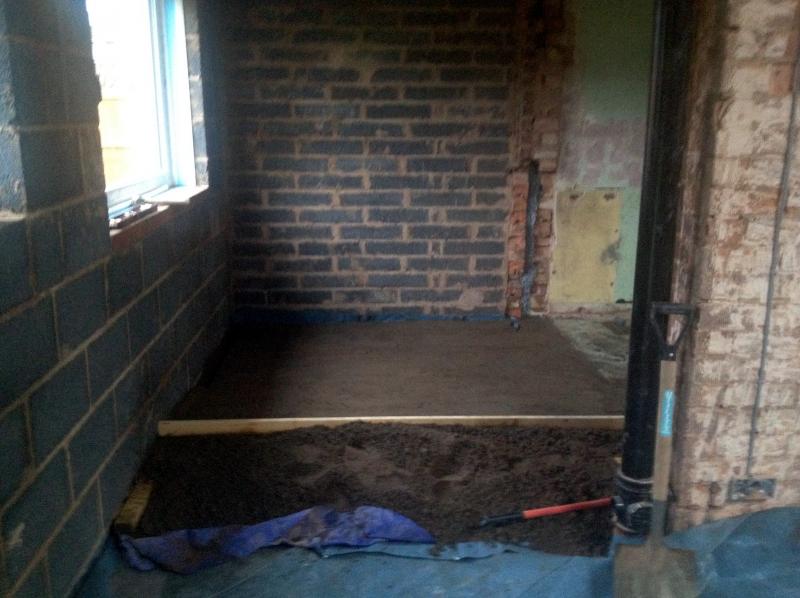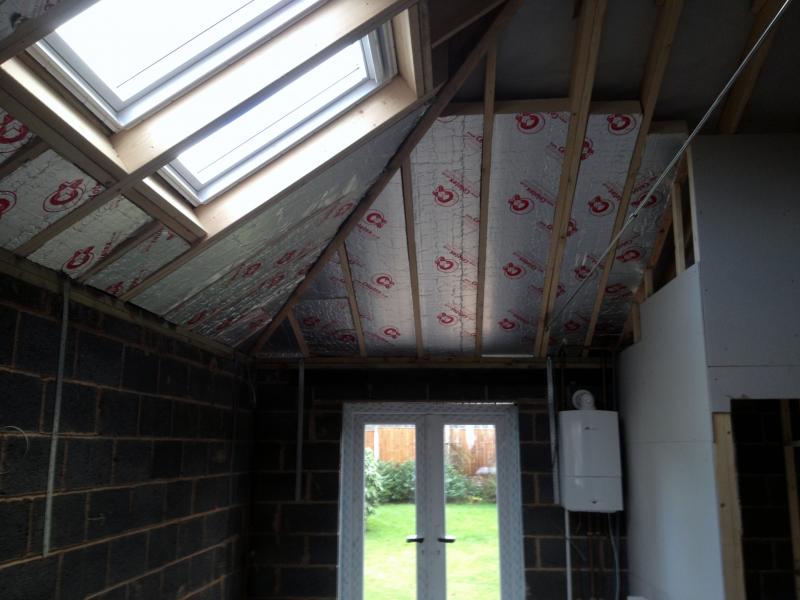So having taken a break over Christmas & New Year, work resumes on the extension, and we're nearly finished ...
The floor screed is all down and drying out. We used just over six tonnes of sand + cement at 4:1, all mixed on site in a hired cement mixer, and that was damned hard work! I'm reasonably pleased with the result: quite flat and fairly smooth. I think that I'll put a very thin layer of cement-based self-levelling compound over the top, but I've saved a useful chunk of money.
Next job is to get insulation into the roof (I've waited to have a level, clear, floor to make access as easy as possible). I'm putting 100mm Celotex between the rafters, and then 40mm more, bonded with plasterboard, over the top. Any tips for fixing? The manufacturers suggestion is to cut the board slightly oversize, and then to rely on a friction-fit - just wedge it in? I assume that as soon as I am ready to fix the PB over the top, it can no longer fall out, anyway ...
Should I tuck the insulation down behind the top of the wallplate, into the box behind the external fascia, or just fit the material flush with the inside edge of the rafters, resting on the wallplate?
There are a couple of places where I'm going to put Celotex/Plasterboard on the walls: there seems to be a paper-based surface on the insulation (rather than the foil for the stuff I used under the floor) - can you use plasterboard adhesive with that (dab & dot) or will it just fall off again?



